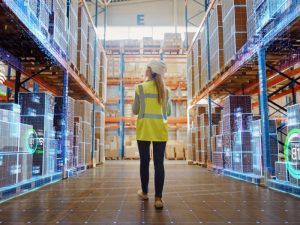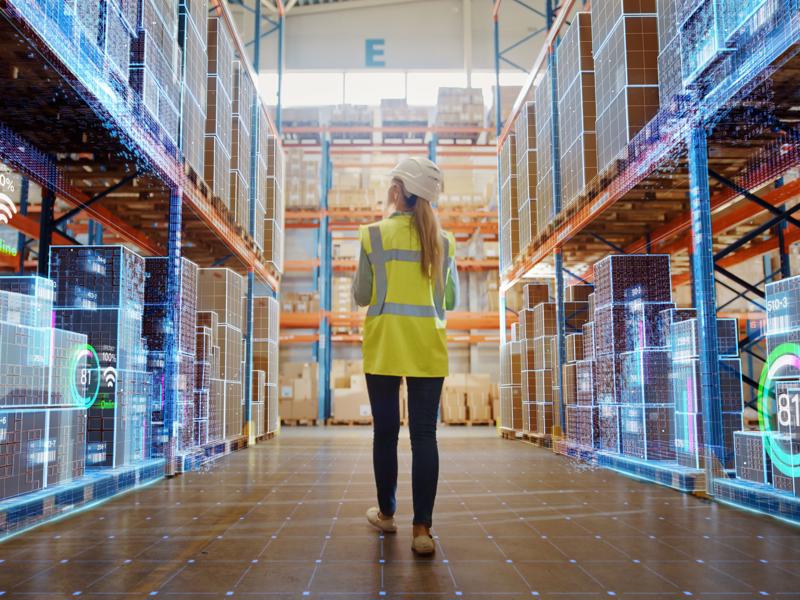The Future of Warehousing: Over 60% of Global Leaders Plan to Deploy AI and AR Technologies
As warehousing and logistics become more critical to global commerce, a growing number of industry leaders are embracing digital transformation. A recent global survey by Zebra Technologies shows that more than 60% of warehouse executives are preparing to implement artificial intelligence (AI) and augmented reality (AR) technologies by 2029. This trend is especially prominent in the Asia-Pacific region, including Vietnam.

Global Warehouse Growth and Pressures
According to Interact Analysis, global warehousing space is expected to grow significantly—from 3,067 square kilometers in 2023 to 3,905 square kilometers by 2030. This 27% increase reflects rising e-commerce demand and the expansion of cross-border supply chains.
However, with growth comes pressure. Warehouse operators are grappling with increased labor costs (forecast to grow 7% annually through 2030), worker shortages, and rising customer expectations. These challenges demand smarter, more efficient ways to manage logistics infrastructure.
The Role of AI and AR in Modern Warehousing
To meet these challenges, companies are turning to AI and AR for solutions that enhance accuracy, efficiency, and worker productivity.
Key Benefits of AI and AR Technologies
-
Improved inventory visibility through real-time tracking and predictive analytics
-
Enhanced worker performance using wearable AR devices and guided workflows
-
Reduced human error through automation and computer vision tools
-
Higher SLA (Service Level Agreement) compliance and faster order fulfillment
-
Safer work environments with AI-powered robotics supporting manual tasks
Accelerated Adoption and Investment Trends
The Zebra Technologies study shows a strong commitment to innovation among warehouse leaders:
-
64% of decision-makers plan to increase their investments in intelligent warehouse technologies over the next five years
-
69% of surveyed managers in Asia-Pacific plan to accelerate the pace of technology deployment by 2029
-
63% already have clear roadmaps for adopting AI, AR, and data-driven solutions in warehouse operations
Asia-Pacific Leads the Way
The Asia-Pacific region is among the most proactive in adopting intelligent warehousing systems. Vietnam, in particular, is witnessing rapid transformation in logistics, fueled by:
-
The rise of e-commerce platforms
-
Increased export-import volumes
-
Government support for digital infrastructure and smart supply chain development
Vietnamese warehouses are beginning to integrate systems such as:
-
Warehouse Management Systems (WMS) using real-time data, AI, and IoT
-
AR-based vision-picking solutions for faster, more accurate order processing
-
Mobile apps and handheld AI tools to optimize task allocation and inventory scanning
Challenges in Implementation
Despite strong interest, some hurdles remain for full-scale deployment of AI and AR in logistics:
-
Initial investment costs remain high, especially for small and medium enterprises (SMEs)
-
Lack of technical expertise and training among frontline workers
-
Integration with existing legacy systems can be complex
-
Concerns over data privacy and cybersecurity in connected environments
Recommendations for Businesses
To stay competitive in the evolving logistics landscape, companies should take the following steps:
1. Start with Pilot Programs
Identify specific areas where AI or AR can deliver quick wins, such as:
-
Inventory accuracy improvement
-
Guided picking using AR glasses
-
Workflow automation for receiving and dispatch
2. Invest in Workforce Training
Upskilling employees to operate AI-powered systems and work alongside automation is crucial for success.
3. Leverage Partnerships
Collaborate with technology providers and logistics consultants who specialize in smart warehousing to accelerate implementation.
4. Ensure Data Integration
Build IT infrastructure capable of supporting real-time data flows, predictive analytics, and IoT integration across all warehouse operations.
Conclusion
The warehousing sector is entering a new era of smart logistics. With more than 60% of global leaders preparing to adopt AI and AR technologies, businesses that embrace this transformation will gain a significant advantage in speed, cost-efficiency, and service quality.
In the context of Vietnam and Asia-Pacific, early adoption can help businesses overcome labor shortages, meet higher customer expectations, and build future-ready logistics networks. The future is smart, connected, and data-driven—and it begins now.
Xem thêm:
Tạo không gian động lực mới để Hải Phòng phát triển đột phá
Thủ tục thông quan hàng thực phẩm xuất khẩu đi Mỹ

